UPDATED MODEL: 2024 Hyundai Ioniq 5 price and specs: Retro electric SUV adds more 'affordable' base model
Hyundai’s first bespoke electric vehicle has gained two tweaked variants, standard equipment and gains new features already found on the related Kia EV6 – with both a price cut and bump.
The Hyundai Ioniq 5 now starts from $69,900 before on-road costs with two trim levels – Dynamiq two-wheel drive (2WD) and Techniq all-wheel drive (AWD) (previously unbadged).
The Dynamiq 2WD is $2000 cheaper and now comes with smaller 19-inch alloy wheels, resulting in 30km of more claimed range (WLTP), and adds an augmented reality head-up display (AR HUD) and interior vehicle-to-load (V2L) plug. But, it loses equipment like relaxation mode seats, ventilated front seats, heated two-way power rear seats, rear window sunshades and more.
Meanwhile, the top-spec Techniq AWD is $1600 more expensive with carryover equipment and also brings an AR HUD and interior V2L that were previously missing. However, it doesn’t include the previously standard panoramic ‘Vision’ glass roof with sunblind but will be available as a $1500 option later in the year.
Despite the slight price cut, the Ioniq 5 is still ineligible for most Australian state incentives. For further information, read our comprehensive guide.
The electric crossover SUV is only sold directly from the automaker in occasional ‘sales drops’ online under a fixed price agency model, where available pre-configured units can be delivered within four to six weeks of ordering. Interested customers should submit an expression of interest via the Hyundai Australia website to be notified of subsequent sales drops.
The Hyundai Ioniq 5 directly rivals its Kia EV6 sibling, Tesla Model Y, Volvo XC40 Recharge, Polestar 2 and more.
Size and design
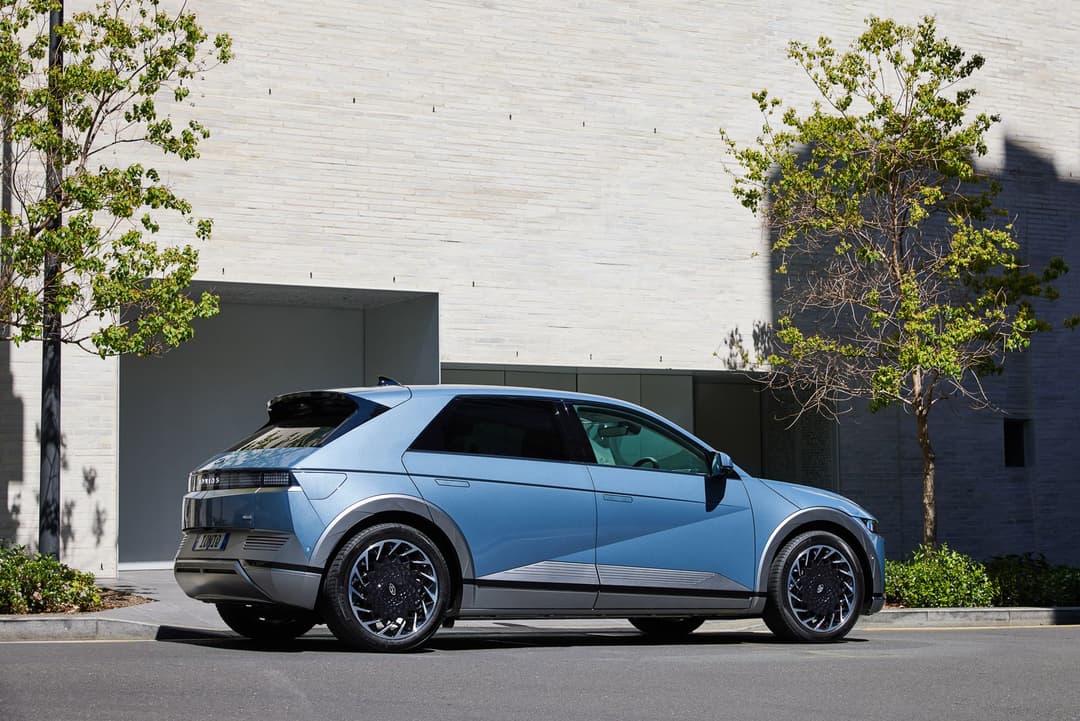
The South Korean-made EV is based on the company’s dedicated Electric-Global Modular Platform (E-GMP) platform shared with the Kia EV6 and Genesis GV60.
Outside, the Ioniq 5 is inspired by a retro design that harps back to the Hyundai Pony sedan sold between 1975 to 1990 (the predecessor of the Excel and Elantra). Elements include eight-bit pixel motifs across the head- and taillights, matte silver cladding, and a badge-less steering wheel with four squares representing ‘H’ in morse code.
Inside, it’s available with three interior trims but is matched with the exterior colour (click on the price and models chapter for further details). All models come with dual windscreen displays that are wrapped in white bezels, employ sustainable materials like paperette on the doors, eco-processed leather seats and other recycled materials, a 9.4-litre sliding glovebox drawer, and slidable ‘Universal Island’ centre console.
The rear seats offer two ISOFIX child seat anchor points, can be reclined, folded in a 60/40 configuration, and has a frunk storage space – 57-litres on the Dynamiq 2WD or 25-litres on the Techniq AWD.
The Ioniq 5 has a 0.29 drag coefficient with an Active Air Flap at the front bumper that opens to cool the battery and closes to improve energy efficiency.
Range and powertrain
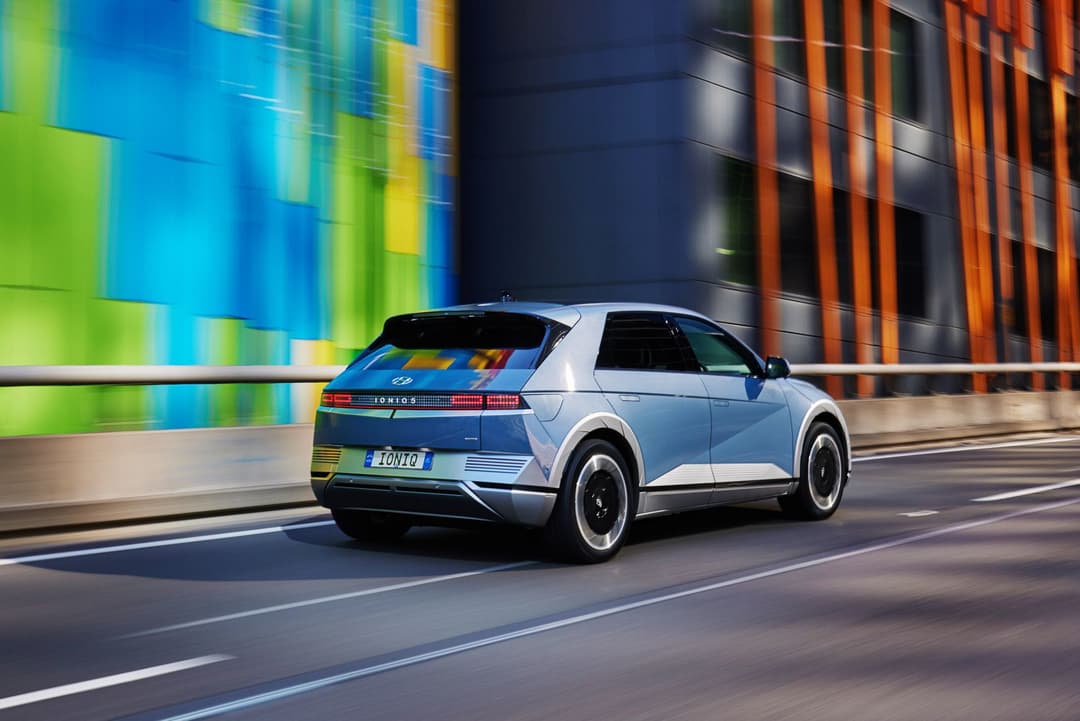
All models in Australia house a 72.6kWh (usable) battery pack, with either a single-motor rear-driven Techniq 2WD or dual-motor Dynamiq AWD able to complete the 0-100km/h acceleration time in 7.4 seconds and 5.2 seconds respectively.
Thanks to the base Dynamiq 2WD now coming in smaller, more efficient 19-inch alloy wheels with Michelin Primacy 4 tyres like the smaller Kona Electric SUV, Hyundai now claims a longer 481km driving range (WLTP) – up 30km – and energy consumption of 168Wh/km (WLTP).
Meanwhile, the top-spec Techniq AWD retains the same 20-inch alloy wheels good for 430km of range (WLTP) and 190Wh/km efficiency (WLTP).
The Ioniq 5 can tow up to 1600kg on a braked trailer or 750kg unbraked and comes with a “trailer pre-wiring package”.
Charging
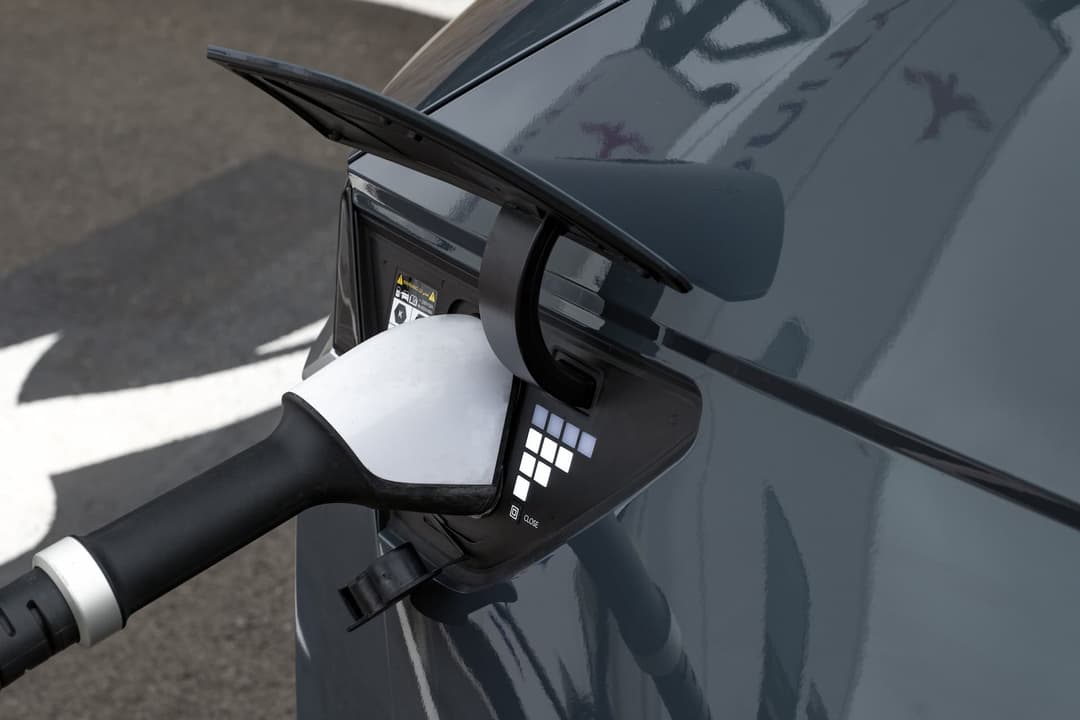
Based on a more advanced 800-volt class charging architecture (specifically 653-volt), the 2022 Hyundai Ioniq 5 crossover can officially top-up at 350kW DC and 11kW AC speeds. However, zecar believes the former is more likely to achieve around 230kW DC under optimal conditions like our charging curve test with the Kia EV6 GT-Line AWD.
The South Korean conglomerate claims it can be charged from 10 to 80 per cent in 57 minutes (Dynamiq 2WD) or 62 minutes (Techniq AWD) on a common 50kW DC fast public charging station. That time is cut to 18 minutes on both models when recharged on a 350kW DC ultra rapid stall. Hyundai also notes five-minutes of juicing up can add 100km of driving range.
On a 11kW AC charging wallbox, it can go to 100 per cent in around six hours.
The bespoke EV uses the standard Type 2/CCS2 connector located on the rear-right side. It includes a trickle charger to plug into a standard household socket.
Vehicle-to-load (V2L) functionality is standard on both models with the revision adding an interior plug as well as exterior via the included adapter. This allows the Ioniq 5 to act as a large battery bank to power any electrical device or even charge another EV in emergency situations.
Zecar understands that since the tweaked line-up is still under the 2022 model-year, Australian-bound Ioniq 5s won’t include the battery preconditioning function via the navigation system found overseas which are 2023 model-years. It also doesn’t have a heat pump.
It offers a range of regenerative braking levels, including ‘i-Pedal’ for one pedal driving and an adaptive automatic mode that adjusts recuperation to what’s in front.
Safety and technology
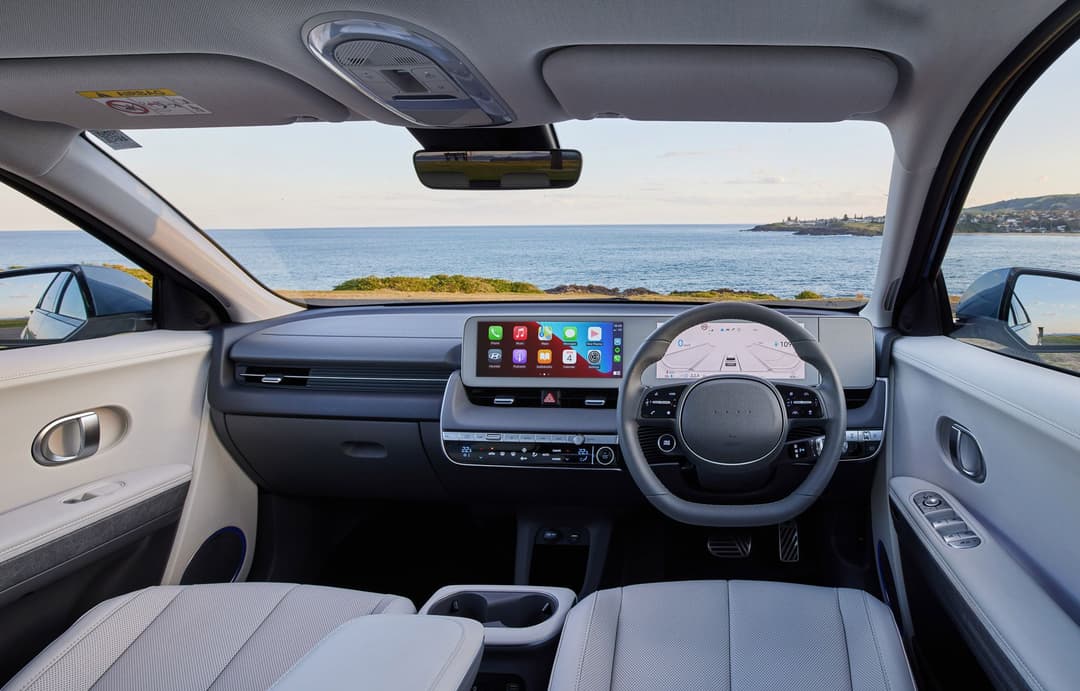
The Hyundai Ioniq 5 has achieved the full five-star safety rating from ANCAP under the 2021 criteria.
Hyundai’s complete ‘SmartSense’ safety assistance suite is standard on all models, including auto emergency braking (AEB) with car, pedestrian, cyclist, junction turning and lane change oncoming detection, blind-spot and rear cross-traffic avoidance assist, smart cruise control with stop/go and machine learning function, and lane following and keeping assist.
Additionally, there’s a blind-spot view monitor camera, high beam assist, driver attention warning, lead vehicle departure alert, a 360-degree surround view camera system, front and rear parking sensors, plus safe exit assist and rear occupant alert.
On the tech front, the Ioniq 5 features twin 12.3-inch infotainment and driver’s instrument displays combined on a single panel.
It runs on the firm’s own operating system with built-in maps, multi-device Bluetooth, and wired Apple CarPlay and wired Android Auto. There’s also a Qi wireless charging pad, an eight-speaker Bose sound system, and four USB-A and two 12-volt charging ports.
Zecar understands Hyundai’s new Bluelink connected mobile app and telematics won’t be offered on the revised 2022 Ioniq 5 in Australia.
Price and models
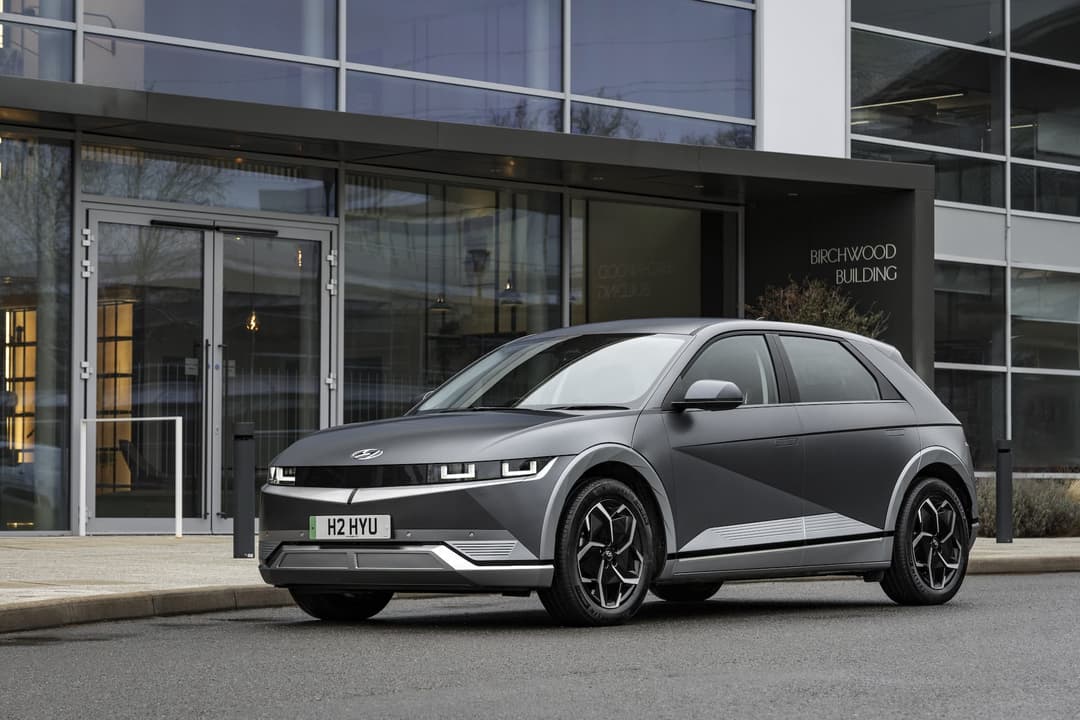
Ioniq 5 Dynamiq 2WD – $69,900 before on-road costs
The single-motor Dynamiq 2WD model comes with as standard:
- 77.4kWh (gross) battery
- 19-inch alloy wheels (235/55 Michelin Primacy 4 tyres)
- Gloss black window frame and mirror trim
- Satin chrome door and bumper trim
- Liquid silver body cladding, front and rear skid plates
- SmartSense safety assistance suite (details above)
- 12.3-inch infotainment system with built-in maps and wired Apple CarPlay and Android Auto
- 12.3-inch digital driver’s instrument display
- AR HUD
- Qi wireless phone charging pad
- Eight-speaker Bose premium audio
- Leather eco processes seats
- Leather steering wheel
- Premium bio PET carpet
- LED interior lighting
- Auto up/down front windows
- Remote front window open/close
- Power child lock (rear doors and windows)
- 10-way power driver and front passenger seats with two-way lumbar support
- Heated front seats
- Dual zone climate control with cabin air filter and air vents
- PTC electric heater
- Sliding centre console and glovebox
- Reclining rear-row seats
- Full auto LED projector-type headlights, taillights and daytime running lights
- Acoustic laminated windscreen and windows
- Solar control windscreen and front door windows
- Rear privacy glass
- Rain sensing aero wipers
- Power pop-out flush door handles
- Heated power folding side mirrors
- Smart power tailgate
- Shift by wire drive selector (mounted on steering wheel)
- Paddle shifters (controls regenerative braking intensity)
- Keyless entry with push button start
- Remote start and remote smart parking assist
- Smart parking assist
- V2L interior and exterior plug
- Alloy scuff plates and pedals
- Luggage net
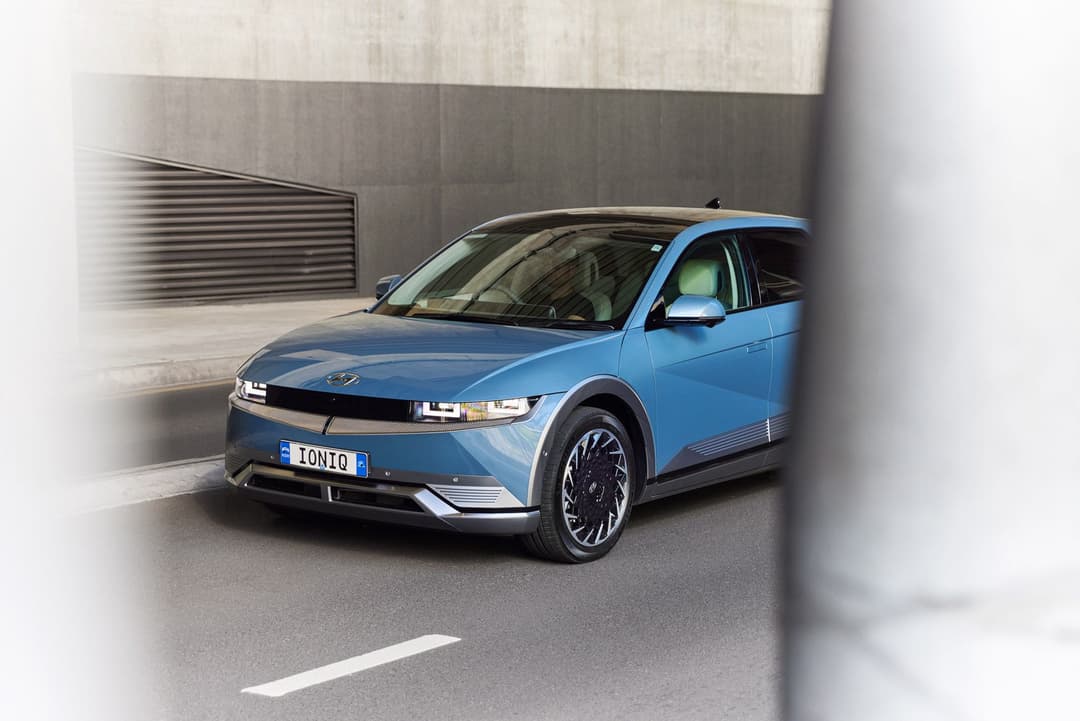
Ioniq 5 Techniq AWD – $77,500 before on-road costs
The flagship dual-motor Techniq AWD gains:
- 20-inch alloy wheels (255/45 Michelin Pilot Sport EV tyres)
- Premium relaxation front seats
- Ventilated front seats
- Heated steering wheel
- Two-way heated power rear seats
- Rear-row sunshades
- Memory function for driver and all passengers
- “Under-bonnet insulator”
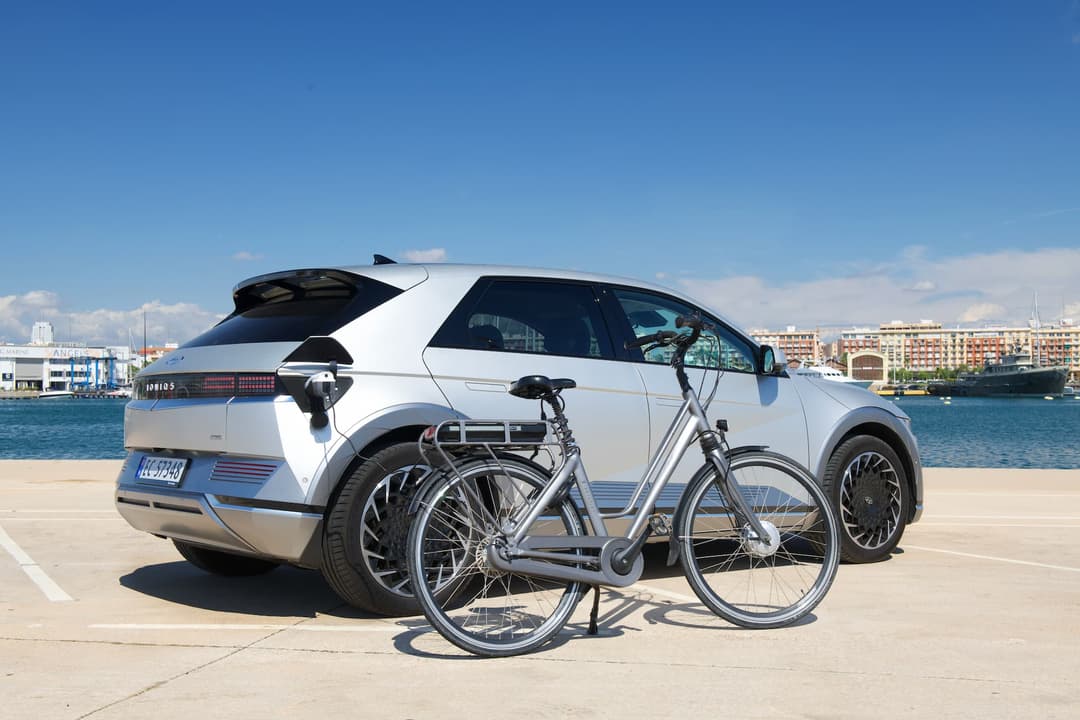
Options
- Gloss paint with Obsidian Black interior – no cost: Atlas White, Phantom Black
- Gloss paint with Dove Grey/Dark Pebble Grey interior – no cost: Digital Teal-Green, Lucid Blue
- Gloss paint with Dove Grey/Dark Teal interior interior – no cost: Galactic Grey
- Matte paint – $1000: Gravity Gold (w/ Dove Grey/Dark Teal interior)
- Vision glass roof (Techniq AWD only) – $1500
Warranty and servicing
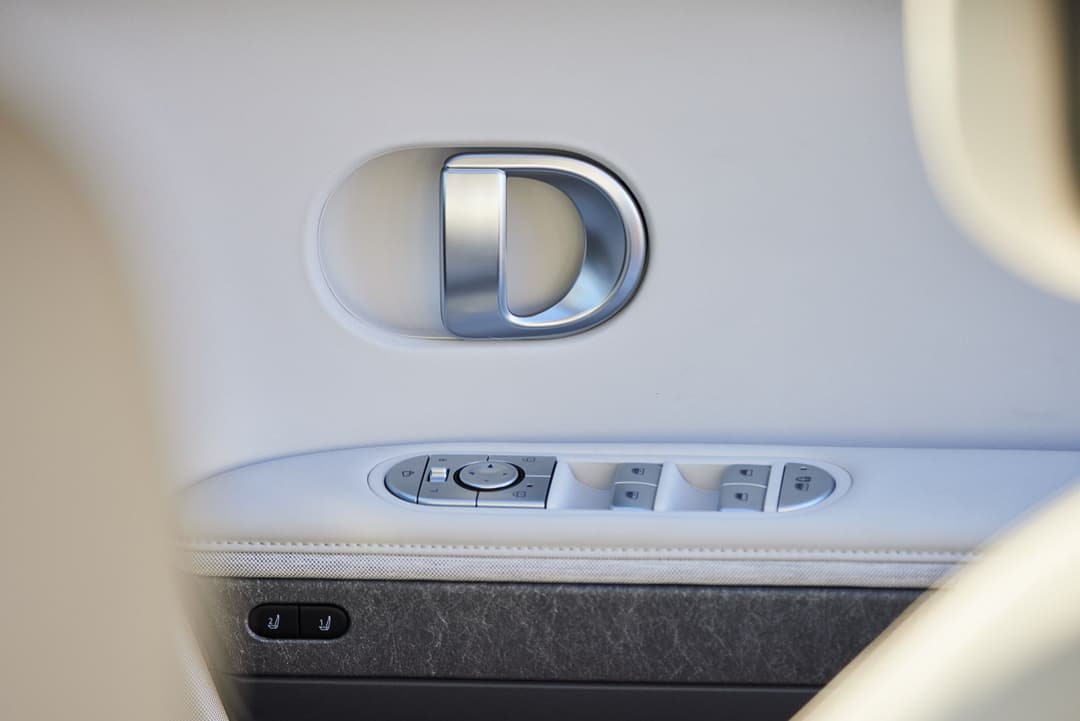
All Hyundai’s are backed by a five-year, unlimited kilometre vehicle warranty and eight-year/160,000km high voltage battery warranty. The brand offers roadside assistance and updates to the built-in map system for up to 10 years renewed at every schedule service visit
It employs an unlimited capped price servicing scheme with the first five services costing around $337 on average per visit for both trim models. Intervals are set at every 12 months/15,000km.
The Ioniq 5 must be serviced at select trained and certified Hyundai BlueDrive dealers.
Figures by Danny Thai
About the author
Stay up to date with the latest EV news
- Get the latest news and update
- New EV model releases
- Get money savings-deal

Privacy policy



